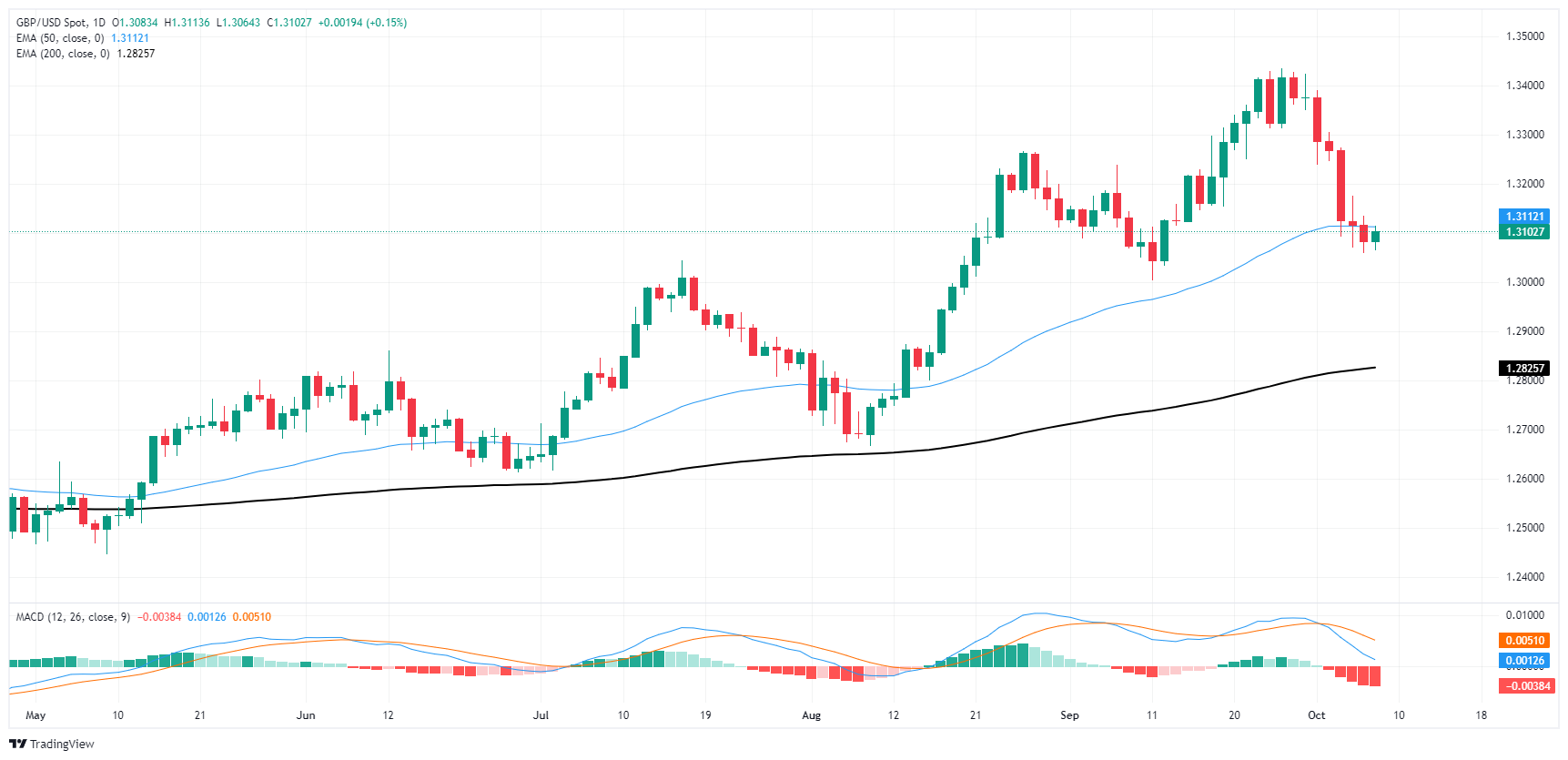- GBP/USD halted recent losses but remains below the 50-day EMA.
- Latest Fed meeting minutes to be published on Wednesday, UK MPC policy hearings on Thursday.
- Investor hopes for a prolonged acceleration of the Fed’s rate cuts have faded.
GBP/USD ended a five-day losing streak, closing with a slim gain of one-sixth of a percent on Tuesday. Even though Cable buyers managed to break the short-term losing streak, the pair remains stubbornly on the low side of the 50-day EMA.
UK data remains sparse in the first half of the trading week, leaving GBP traders to wait until the Bank of England (BoE) Monetary Policy Report hearings, scheduled for Thursday. UK Gross Domestic Product (GDP) figures will follow on Friday.
The latest minutes from the Federal Reserve (Fed) meeting on the September rate cut will be released on Wednesday, giving dollar traders plenty to analyze. Markets were widely expecting a double rate cut in November after the Fed opened the floodgates with a 50 basis point rate cut in September. However, core inflation still above the Fed’s target levels and US jobs numbers that vastly beat expectations last week have firmly dampened hopes for rate cuts.
According to the CME’s FedWatch tool, rates markets see a nearly 90% chance that the Fed will follow September’s 50 basis point rate cut with a more modest 25 basis point cut on November 7. Fed officials have widely signaled that a weakening of the U.S. labor market would be required to push the Federal Reserve into larger rate cuts.
GBP/USD Price Forecast
GBP/USD is experiencing a short-term correction after a strong uptrend. The key level to watch is the 50 day EMA, which is currently acting as resistance. A break above this level could reignite bullish momentum. However, the bearish signals from the MACD and the price’s inability to sustain above the 50-day EMA suggest that traders should be cautious. If the price falls below the 1.30 support, it could signal a deeper correction towards the 200-day EMA. Conversely, a break above the 50-day EMA would indicate that the bulls are regaining control.
GBP/USD Daily Chart
The British Pound FAQs
The British Pound (GBP) is the oldest currency in the world (886 AD) and the official currency of the United Kingdom. It is the fourth most traded currency unit in the world, with 12% of all transactions and an average of $630 billion per day, according to 2022 data.
Its key currency pairs are GBP/USD, also known as “Cable”, which represents 11% of the forex market, GBP/JPY, or the “Dragon” as it is known to traders (3%), and EUR/GBP (2%). The pound sterling is issued by the Bank of England (BoE).
The most important factor influencing the value of the Pound Sterling is the monetary policy decided by the Bank of England. The Bank of England bases its decisions on achieving its main objective of “price stability”, that is, a stable inflation rate of around 2%. Its main tool to achieve this is the adjustment of interest rates.
When inflation is too high, the Bank of England tries to contain it by raising interest rates, which makes access to credit more expensive for individuals and companies. This tends to be positive for the GBP, as higher interest rates make the UK a more attractive place for global investors to park their money.
When inflation is too low, it is a sign that economic growth is slowing. In this scenario, the BoE will consider lowering interest rates to make credit cheaper, so that companies borrow more to invest in projects that generate growth.
The published data gauges the health of the economy and may influence the value of the Pound sterling. Indicators such as GDP, manufacturing and services PMIs, and employment can influence the direction of the Pound.
A strong economy is good for the British pound. Not only does it attract more foreign investment, but it may encourage the Bank of England to raise interest rates, which will directly strengthen the Pound. Otherwise, if economic data is weak, the pound is likely to fall.
Another significant data for the pound sterling is the trade balance. This indicator measures the difference between what a country earns from its exports and what it spends on imports during a given period.
If a country produces highly sought-after exports, its currency will benefit exclusively from the additional demand created by foreign buyers wishing to purchase these goods. Therefore, a positive net trade balance strengthens a currency and vice versa for a negative balance.
Source: Fx Street
I am Joshua Winder, a senior-level journalist and editor at World Stock Market. I specialize in covering news related to the stock market and economic trends. With more than 8 years of experience in this field, I have become an expert in financial reporting.







